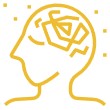Best Practices in Shift-to-Remote Assessment (PDF, 652KB)
 Use planned assessments and outcomes as the guide
Use planned assessments and outcomes as the guide
Consider what you had previously communicated to students about the structure, expectations, and mode of final assignments. Work within that structure to substitute or modify, as opposed to large-scale redefinitions.
The intended outcomes of the assignment or course may also guide decision-making as you consider what could count as a demonstration of achievement (Kinzie, 2020).
Prioritize clear communication and connection with students
Clear communication to students regarding assessment helps students plan and effectively manage their tasks. It can also reduce apprehension, especially for high-stakes examinations (Rahim, 2020). Once you’re decided on an assessment approach, review the instructions you’ve prepared for clarity. Offer one or two ways that students can opt to connect with you and/or teaching assistants for interaction and/or feedback (Senel & Senel, 2021).
 Leverage assessment options with technology
Leverage assessment options with technology
Technology can support the substitutions and modifications made in shifting to remote. Common forms of shift-to-remote assessment tools include assignment drop boxes and online tests. Where it can be afforded, build in flexibility such as more time, asynchronous completion, or flexible deadlines to universally offer students accommodations that support a range of situations (Rahim, 2020; Senel & Senel, 2021).
Address academic integrity concerns
Remind students about the academic integrity (AI) policy. You might even require students complete an agreement before beginning their assignment. Technical strategies to deter departures to AI include multiple-choice questions with context-rich stems, open-ended questions, randomising questions, shuffling question and options order, limiting the number of attempts, and deferring automated feedback until after the test closes (Rahim, 2020).
 Acknowledge the stress and anxiety of the situation
Acknowledge the stress and anxiety of the situation
A rapid shift to remote affects everyone’s well-being – students and your own.
Clear communication, transparency, and adequate guidance can help (Arora, Chaudhary, Singh, 2021). Consider what you and your students need as mental health supports and coping strategies and tap into supports available at Queen’s (see Tap into Mental Health Supports for a few curated resources).
References
Arora, S., Chaudhary, P., & Singh, R. K., (2021). Impact of coronavirus and online exam anxiety on self-efficacy: the moderating role of coping strategy. Interactive Technology and Smart Education, 18(3), 475-492. 10.1108/ITSE-08-2020-0158
Kinzie J. (2020). How to Reorient Assessment and Accreditation in the Time of COVID‐19 Disruption. Assessment Update, 32(4), 4–5.
Rahim, A. F. (2020). Guidelines for online assessment in emergency remote teaching during the COVID-19 pandemic. Education in Medical Journal, 12(2), 59–68.
Senel, S. & Senel, H. C. (2021). Remote assessment in higher education during COVID-19 pandemic, International Journal of Assessment Tools in Education, 8(2), 181–199.
